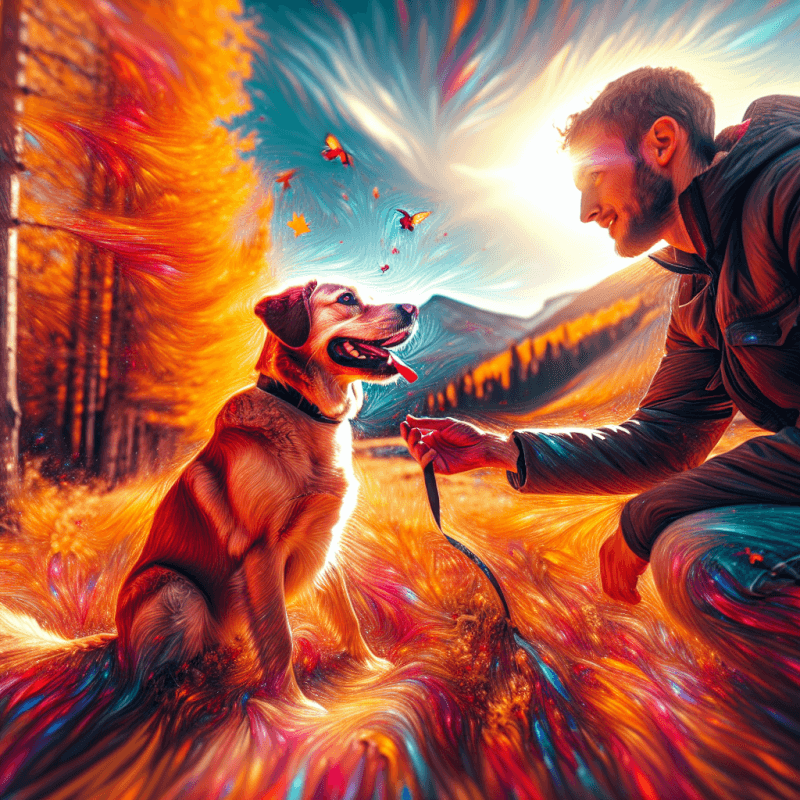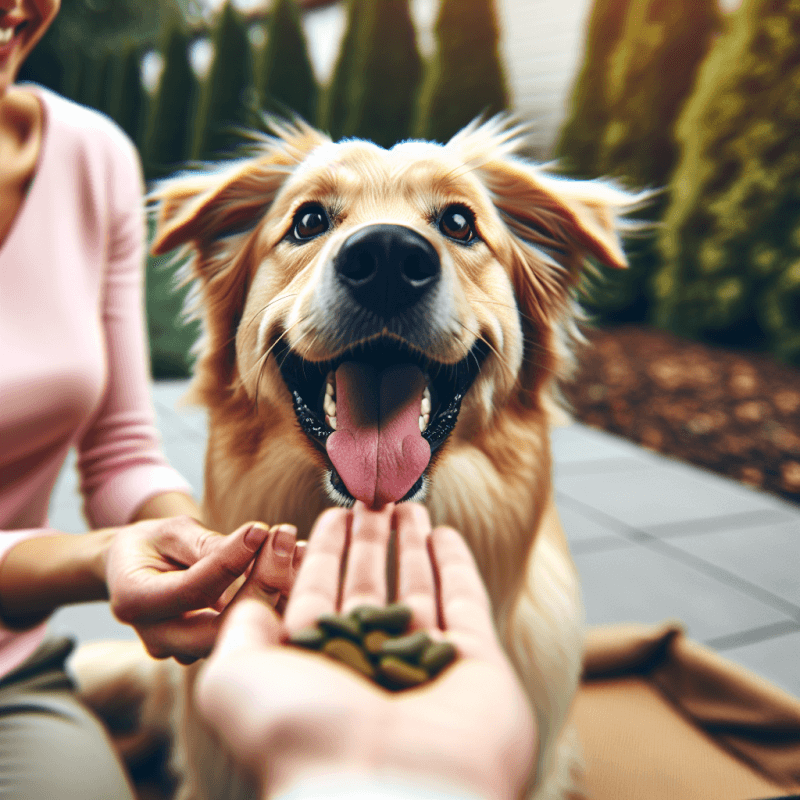Are you tired of dealing with your dog’s unwanted behaviors? Look no further! The “Dog Training Behavior Conditioning Book” is here to help. This comprehensive guide is designed to provide you with effective techniques and strategies to train your furry friend and eliminate any behavioral issues. From basic obedience commands to behavioral correction, this book covers it all. Get ready to embark on a journey of transformation as you strengthen the bond with your dog and create a well-behaved companion. Don’t wait any longer; start your dog’s training journey today!
Chapter 1: Understanding Canine Behavior
1.1 The Basics of Dog Behavior
Understanding the basics of dog behavior is crucial for both new and experienced dog owners. Dogs have their own unique ways of communicating and expressing themselves, and it’s important to understand their body language and vocalizations. By observing and interpreting their behavior, you can better understand what your dog is trying to communicate with you and others.
Ready for Cat Trivia?
Test your knowledge about cats!

1.2 The Importance of Training and Conditioning
Training and conditioning are essential components of responsible dog ownership. It not only teaches your dog important skills and commands but also helps to establish a bond between you and your furry friend. Through training, you can teach your dog how to behave appropriately in various situations and environments. It also helps to prevent behavior problems, such as destructive chewing or excessive barking.
1.3 Common Behavioral Issues in Dogs
Many dog owners often face common behavioral issues with their furry companions. These issues may include excessive barking, separation anxiety, or aggression towards other dogs or people. Understanding why these issues occur and learning how to address them is key to a harmonious relationship with your dog. In this chapter, we will explore these common behavioral issues and provide tips on how to manage and modify such behaviors.
Chapter 2: Tools and Techniques for Training
2.1 Positive Reinforcement
Positive reinforcement is a highly effective and humane training technique. It involves rewarding your dog for desirable behaviors, such as obeying commands or exhibiting good manners. This can be done through treats, praise, or playtime, which helps to reinforce positive associations and encourage your dog to repeat those behaviors in the future.
2.2 Clicker Training
Clicker training is a popular technique that uses a small handheld device called a clicker to mark desired behaviors. By associating the sound of the clicker with rewards, you can communicate with your dog more effectively. Clicker training is particularly useful for teaching new commands or tricks, as the sound of the clicker serves as an instant signal that the desired behavior has been performed.
2.3 Lure-based Training
Lure-based training involves using treats or toys to guide your dog into performing specific actions or behaviors. By using a lure, such as a treat held in your hand, you can guide your dog’s movements and shape their behavior. This technique is commonly used for teaching commands like sit, stay, or lie down.
2.4 Remote Training Collars
Remote training collars, also known as e-collars or shock collars, are tools that deliver a mild electronic stimulation to your dog’s neck when a specific behavior is not desired. These collars should only be used under the guidance of a professional trainer who can ensure their safe and appropriate use. When used correctly, remote training collars can be an effective tool for reinforcing commands and maintaining control in challenging situations.
2.5 Leash Training
Leash training is an essential skill for every dog owner. Teaching your dog to walk calmly on a leash not only ensures their safety but also enhances your relationship with them. Leash training involves teaching your dog to walk beside you without pulling or lunging. It requires patience, consistency, and positive reinforcement to achieve positive results.
2.6 Crate Training
Crate training is a valuable tool that can provide your dog with a safe and comfortable space of their own. It can also help with house training and preventing destructive behavior when you’re not able to closely supervise your dog. Crate training involves gradually introducing your dog to their crate and associating it with positive experiences, such as treats or toys. It’s important to remember that crate training should never be used as a form of punishment.

Chapter 3: Establishing Leadership
3.1 The Alpha-Dog Concept
The alpha-dog concept refers to the idea that dogs are pack animals and require a strong leader within their human family. As a dog owner, it’s important to establish yourself as the leader by setting clear boundaries and rules for your dog to follow. This includes consistent enforcement of commands, maintaining a calm and assertive demeanor, and providing structure and guidance in daily routines.
3.2 Effective Communication
Effective communication between you and your dog is essential for a successful and harmonious relationship. Dogs communicate primarily through body language, vocalizations, and facial expressions. By learning to interpret and respond appropriately to your dog’s signals, you can strengthen your bond and prevent misunderstandings. It’s important to be consistent, patient, and use clear verbal cues and hand signals to communicate your expectations.
3.3 Building Trust and Respect
Building trust and respect is crucial for a healthy relationship between you and your dog. Trust is established by being consistent, fair, and reliable in your interactions with your dog. Respect is earned through setting boundaries, enforcing rules, and rewarding positive behavior. By providing positive reinforcement and creating a secure and nurturing environment, you can foster a deep bond built on trust and respect.
3.4 Consistency and Boundaries
Consistency and boundaries are key elements of effective dog training. Dogs thrive on routine and structure, and they need clear boundaries to understand what is expected of them. Consistency in training methods, commands, and rules helps your dog to understand what is acceptable behavior. Setting clear boundaries establishes a framework for your dog to operate within, providing them with a sense of security and guidance.
Chapter 4: Socialization and Aggression
4.1 Introducing a New Dog to the Family
Introducing a new dog to your family requires careful planning and consideration. Proper socialization and a gradual introduction are essential to ensure a positive and successful integration. This chapter will guide you through the steps involved in introducing a new dog to your home, existing pets, and family members.
4.2 Dealing with Reactive Behavior
Reactive behavior, such as excessive barking or lunging, can be challenging for both dogs and their owners. It’s important to understand the underlying causes of reactive behavior and to address them using positive reinforcement techniques and desensitization exercises. This section will provide guidance on how to manage and modify reactive behavior in your dog.
4.3 Managing Aggression Issues
Aggression is a complex issue that requires professional guidance and intervention. If your dog displays aggression towards people or other animals, it’s crucial to seek the help of a certified behaviorist or professional trainer experienced in aggression cases. This section will provide an overview of aggression in dogs and offer suggestions on how to manage and address aggression issues.
4.4 Dog-to-Dog Communication
Understanding how dogs communicate with each other is essential for preventing conflicts and promoting positive interactions between dogs. This section will explore the various ways dogs use body language, vocalizations, and other forms of communication to interact with one another. By recognizing these signals, you can help facilitate positive social interactions and prevent aggressive or fearful behavior.

Chapter 5: Addressing Common Behavior Problems
5.1 House Training
House training is one of the first and most important lessons your dog needs to learn. It involves teaching your dog to eliminate outside or in a designated area and not in your home. This section will provide step-by-step guidance on how to effectively house train your dog using positive reinforcement and a consistent routine.
5.2 Excessive Barking
Excessive barking can be a nuisance and a source of frustration for dog owners. Understanding why dogs bark excessively and implementing appropriate strategies to manage and modify this behavior is essential. This section will offer tips and techniques for addressing excessive barking in a positive and effective manner.
5.3 Separation Anxiety
Separation anxiety is a common behavioral issue in dogs that can cause distress for both the dog and the owner. This section will explain the causes and symptoms of separation anxiety and provide strategies for helping your dog feel more comfortable when left alone. Through gradual desensitization and counterconditioning, you can help your dog overcome separation anxiety and develop independence.
5.4 Chewing and Destructive Behavior
Chewing and destructive behavior can be frustrating and costly for dog owners. It’s important to understand why dogs engage in these behaviors and provide appropriate outlets and alternatives to prevent damage. This section will explore effective strategies for preventing destructive chewing and redirecting your dog’s chewing behaviors onto appropriate toys and chew items.
5.5 Jumping Up on People
Jumping up on people is a common problem that can be both annoying and potentially dangerous, especially for children or elderly individuals. This section will provide guidance on how to teach your dog appropriate greeting behaviors and eliminate jumping up through positive reinforcement and consistent training.
5.6 Pulling on the Leash
Walking your dog should be an enjoyable and stress-free experience, but pulling on the leash can make it challenging and exhausting. This section will offer tips and techniques to teach your dog loose-leash walking using positive reinforcement, patience, and consistency. By teaching your dog to walk politely on a leash, you can make your walks more enjoyable for both of you.
Chapter 6: Advanced Training Techniques
6.1 Off-Leash Training
Off-leash training allows your dog to have more freedom and independence while still maintaining control and ensuring their safety. This section will provide guidance on how to teach your dog reliable off-leash behaviors using positive reinforcement, recall training, and a gradual approach.
6.2 Recall Training
Recall training, also known as “coming when called,” is a vital skill that can potentially save your dog’s life in dangerous situations. This section will outline step-by-step techniques to teach your dog a reliable recall through positive reinforcement, consistent practice, and gradually increasing distractions.
6.3 Agility and Obstacle Courses
Agility and obstacle courses offer mental and physical stimulation for dogs while strengthening their bond with their owners. This section will introduce the concept of agility training and provide tips on how to introduce your dog to different obstacles, teach commands, and build confidence through positive reinforcement training.
6.4 Tricks and Commands
Teaching your dog tricks and commands is not only fun but also mentally stimulating for them. This section will provide a variety of tricks and commands that you can teach your dog, from basic obedience commands to more advanced behaviors. Through positive reinforcement and consistent training, you can impress your friends and family with your dog’s impressive repertoire of tricks.
6.5 Competitions and Sports
If you’re interested in taking your dog’s training to the next level, competitions and sports offer a great opportunity to showcase their skills. This section will introduce various dog sports and competitions, such as obedience trials, agility trials, and rally obedience. It will also provide information on how to get started and where to find local events and organizations.

Chapter 7: Training for Specific Breeds
7.1 Toy Breeds and Small Dogs
Training toy breeds and small dogs comes with its own set of challenges and considerations. This section will provide breed-specific training tips for toy breeds, such as Chihuahuas, Pomeranians, and Yorkshire Terriers. It will address their unique needs, potential behavior issues, and effective training techniques tailored to their size and temperament.
7.2 Working and Herding Dogs
Working and herding dogs, such as Border Collies, German Shepherds, and Australian Shepherds, have specific training requirements due to their instinctual herding and working behaviors. This section will explore the training needs of these breeds and provide guidance on providing mental and physical stimulation, as well as channeling their natural instincts into appropriate outlets.
7.3 Sporting and Hunting Dogs
Sporting and hunting dogs, like Labrador Retrievers, Golden Retrievers, and Pointers, excel in various outdoor activities and require specialized training to fulfill their natural instincts. This section will offer tips and techniques for training sporting and hunting breeds, including scent work, retrieving, and obedience training.
7.4 Guard and Protection Dogs
Guard and protection dogs, such as German Shepherds, Doberman Pinschers, and Rottweilers, have unique characteristics and training needs. This section will address the specific requirements of training guard and protection breeds, including teaching obedience commands, confidence building, and appropriate protection behaviors under professional guidance.
7.5 Rescue and Assistance Dogs
Rescue and assistance dogs play crucial roles in society, providing support and assistance to individuals with disabilities or in search and rescue operations. This section will discuss the training process, requirements, and important considerations when training rescue and assistance dogs. It will also explore how to support and maintain their training throughout their working lives.
Chapter 8: Training Throughout a Dog’s Life
8.1 Puppy Training
Puppyhood is a critical time for training and socialization. This section will outline the fundamental steps for effectively training a new puppy, including house training, basic commands, and appropriate socialization experiences. By starting training early, you can set your puppy up for a lifetime of good behavior and positive habits.
8.2 Adolescent Training
Adolescence is a challenging phase in a dog’s life when they may test boundaries and exhibit more independence. This section will provide guidance on handling the unique training needs of adolescent dogs and how to navigate through this stage successfully using consistent training, patience, and positive reinforcement.
8.3 Adult Dog Training
Even though adult dogs may already have some training, they can benefit from ongoing training and reinforcement of commands and behaviors. This section will address the specific training needs of adult dogs, including reinforcing basic obedience, addressing behavior issues, and providing mental and physical stimulation.
8.4 Senior Dog Training
Senior dogs can continue to learn and benefit from training throughout their golden years. This section will discuss the importance of considering a senior dog’s physical and cognitive abilities when training, as well as addressing potential age-related behavior changes. Training activities can help keep senior dogs mentally sharp, physically active, and maintain their bond with their owners.

Chapter 9: Understanding Canine Body Language
9.1 The Importance of Body Language
Understanding canine body language is essential for effective communication and preventing misunderstandings. This section will highlight the importance of observing your dog’s body language to gain insight into their emotions, needs, and intentions. By recognizing and responding appropriately to your dog’s signals, you can enhance your understanding and strengthen your relationship.
9.2 Interpreting Dog Gestures
Dogs use a variety of gestures and movements to communicate their intentions and feelings. This section will explore common dog gestures, such as tail wagging, ear position, and facial expressions. By learning to interpret these gestures, you can better understand what your dog is trying to convey and respond appropriately.
9.3 Stress and Anxiety Signals
Stress and anxiety can have a significant impact on a dog’s behavior and well-being. This section will outline common stress and anxiety signals in dogs, such as panting, excessive yawning, or pacing, and provide tips on how to identify and alleviate stressors in your dog’s environment.
9.4 Communicating with Humans
Effective communication between humans and dogs is a two-way street. This section will discuss how to effectively communicate with your dog using verbal cues, hand signals, and positive reinforcement techniques. By establishing clear communication channels, you can strengthen your bond and facilitate a harmonious relationship with your furry friend.
Chapter 10: Professional Training Resources
10.1 Professional Dog Trainers
Professional dog trainers can provide valuable guidance and expertise in training your dog. This section will outline what to look for in a professional trainer, how to choose a reputable trainer, and the benefits of working with a professional to address specific behavior issues.
10.2 Certified Behaviorists
Certified behaviorists specialize in addressing complex behavior problems in dogs. This section will explain the role of a certified behaviorist, when to consider consulting one, and what to expect from the behavior consultation process. Working with a certified behaviorist can provide tailored solutions and strategies to address your dog’s specific needs.
10.3 Training Classes and Workshops
Training classes and workshops offer structured environments and professional guidance for training your dog. This section will discuss the benefits of attending training classes or workshops, how to find reputable options in your area, and what to expect from these training sessions.
10.4 Online Training Programs
Online training programs provide convenience and flexibility for dog owners who prefer to learn and train at their own pace. This section will explore the benefits of online training programs, how to choose a reputable program, and what to consider when opting for online training.
10.5 Books and Reference Materials
Books and reference materials offer a wealth of knowledge and guidance for dog owners looking to further their understanding of training and behavior. This section will recommend a variety of books and reference materials on dog training, behavior, and communication, providing resources to deepen your knowledge and enhance your training journey.
By covering these comprehensive topics, this article aims to provide a valuable resource for dog owners looking to understand canine behavior, establish effective training techniques, and address common behavior problems. Remember, training your dog is a journey that requires patience, consistency, and a willingness to adapt to your dog’s individual needs. With the right knowledge and approach, you can build a strong and positive bond with your furry companion.



